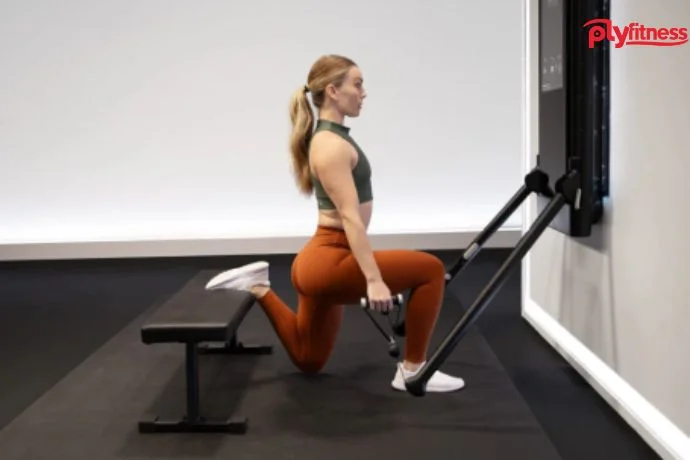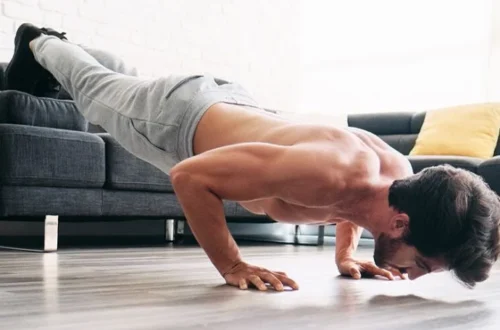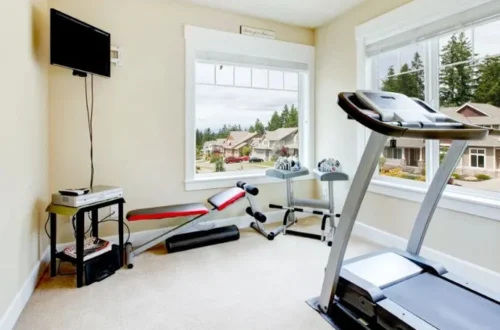Two years ago, I hit what every fitness freak fears: a plateau. I had been working out regularly for months, but I wasn’t getting any better. It was really aggravating that I could bench press the same weight, run the same distance, and look the same in the mirror. That’s when I chose to do advanced strength training programs that revolutionized how I think about fitness.
If you’re stuck in a rut or want to push your training to the next level, these five advanced workout moves might be precisely what you need. They are hard, work well, and are supposed to make you stronger and more durable at the same time. But be careful: these aren’t the kinds of workouts you usually do at the gym. They want to be respected, do things the right way, and rise slowly.
Let me tell you about the five strength-building exercises that not only helped me break through my plateau, but also changed how I think about fitness. By the end of this article, you’ll know why these exercises are so important and how to do them correctly.

Why Advanced Strength Training Exercises Matter
Let’s speak about why it’s vital to move on from basic movements before we start the workouts. A lot can happen to your body. After practicing the same job for 8 to 12 weeks, your muscles, heart, and neurological system get better at it.
Advanced training moves test your body in new ways by:
- Getting numerous muscle groups to act together
- Asking for greater help and stability
- More time under pressure
- Getting stronger while making your heart rate go up
- Making patterns of movement more useful
These strength training exercises not only make you stronger, but they also make you a better athlete. They prepare your body for real-life challenges and provide you with the kind of fitness that helps you with all you do outside of the gym.
My Journey to Advanced Training
To be honest, I was embarrassed the first time I tried these routines. Even though I had been going to the gym for years and felt like a veteran, I suddenly felt like a beginner again. When I couldn’t complete a single proper repetition of a few moves, my ego suffered a hit.
But that feeling of being humbled was just what I needed. It taught me to put form before my ego and growth before perfection. These five workouts altered not only my body, but also my whole relationship with fitness after six months of daily practice.
The results were clear:
- I was able to raise 40 more pounds off the ground.
- I ran a mile 90 seconds faster.
- Made my muscles look sharper than they ever did previously
- Made my daily life more stable and balanced
- Made me feel better about myself, both at the gym and outside of it.

Exercise #1: Turkish Get-Ups
Why It Changed Everything
The Turkish Get-Up is more than just a workout; it’s a dance of movement. This strength-building workout works your whole body in seven distinct ways, challenging your stability, coordination, and strength all at once.
When I first saw someone execute a Turkish Get-Up, I thought it was an extremely hard way to stand up while holding anything heavy. I was completely wrong. This exercise teaches your body how to work together and produces tremendous core strength and shoulder stability.
The Benefits That Surprised Me
- Coordination of the full body: All of your muscles, from your toes to your fingers, need to work together.
- Unilateral strength: Working on one side at a time shows and improves imbalances.
- Core integration means that your abs function all the time to maintain your body steady while you move.
- Shoulder health: When done appropriately, it produces powerful shoulders that won’t break.
- Mental focus: needs full concentration and awareness
How to Perform Turkish Get-Ups
Starting Position:
- Lie on your back and hold a dumbbell or kettlebell in your right hand.
- Put your right foot firmly on the ground and bend your right knee.
- To stay stable, stretch your left arm out at a 45-degree angle.
- Push the weight straight up and keep your eyes on it the whole time.
The Seven Phases:
- Roll to your elbow: Use your core to roll up onto your left elbow.
- Elbow to hand: Push up from your elbow to your left hand.
- Bridge: Lift your hips off the floor to make a bridge.
- Sweep the leg: Pull your left leg under your body to get down on your knees.
- Lunge position: Stand up from your knees and move into a lunge position.
- Stand: Push through your front leg to stand up straight.
- To go back to where you started, carefully undo each step.
My Progression Strategy
Week 1–2: Do the action without any weight, and pay close attention to how you do it. attern.
weeks 3 and 4. Put in a light dumbbell (8 to 12 pounds).
Week 5–8: Get to a weight between 15 and 20 pounds.
From weeks 9 to 12, work on getting your weight to 25 to 35 pounds
I began with simply my body weight and spent two weeks learning how to move. This foundation was crucial – rushing with weight would have been a mistake.

Exercise #2: Bulgarian Split Squats with Overhead Press
The Game-Changer Combination
Bulgarian split squats are already demanding, but when you add an overhead press, they become one of the best exercises for building strength in your whole body. This workout works on your core and shoulders while also making one leg stronger.
I didn’t know I had these problems until I completed this relocation. I had bad balance; my weaker leg was weaker than I thought it would be, and when I was fatigued, I really needed to work on my core strength.
Why This Exercise Is So Effective
- Unilateral leg strength: This exercise makes each leg stronger on its own, so you don’t have to make up for it.
- Balance and stability: These test your proprioception and balance systems.
- Core integration: Your core works hard to keep your body straight.
- Shoulder stability: Pressing things over your head while standing on one leg builds functional strength.
- Time-saving: works several muscle groups at once
Proper Form and Technique
Setup:
- Keep your distance of 2 to 3 feet from a bench or other elevated surface.
- Put your back foot on the bench behind you.
- Hold the dumbbells at shoulder height and get ready to press them over your head.
- Keep your core strong and stand up straight.
The Movement:
- Bend your front knee till your thigh is level with the ground to lower your body.
- Press both dumbbells over your head as you go down.
- Your dumbbells should be locked out above your head and deep in the squat at the bottom of the split squat.
- Push through your front heel to get back to where you started.
- As you rise, bring the weights back down to shoulder height.
My Training Protocol
This is something I do as part of my leg day routine:
- Three to four sets for each leg
- Do 8 to 12 reps for each leg.
- Weight progression: I started with 15-pound dumbbells and now I use 25 to 30 pounds.
- Rest for 60 to 90 seconds between sets.
The most important thing is to start with modest weights and work on your balance and coordination before adding more weight.
Exercise #3: Single-Arm Dumbbell Snatches
Power Meets Endurance
The single-arm dumbbell snatch is a strength training move that also helps you create explosive power. This workout builds incredible strength all over your body and is one of the finest methods to get your heart and lungs working.
I found this exercise while seeking for different ways to do Olympic lifts without a barbell. I found a way to get my heart rate up to cardiac levels while simultaneously getting a lot stronger and more powerful.
The Total-Body Benefits
- Explosive power development: teaches your body how to produce force quickly
- Cardiovascular conditioning: makes your heart rate go up a lot.
- Hip hinge mastery: Teaches you how to properly open your hips
- Core stability: Needs a lot of core work all the time
- Grip strength: makes your forearms and hands incredibly strong.
- Mental toughness: Working hard to get stronger
Step-by-Step Technique
Starting Position:
- Put a dumbbell on the floor in front of your feet.
- Put your feet a little wider than shoulder-width apart.
- Get down on your knees and pick up the dumbbell with one hand.
- Stand up straight and keep your chest up.
The Explosive Movement:
- Push through your heels and swiftly expand your hips.
- As the dumbbell moves up, pull it closer to your body.
- When the dumbbell reaches your chest, quickly slip down beneath it..
- With your arm fully extended, catch the weight over your head.
- With the weight locked above your head, stand up straight.
- Bring the weight back down to the starting position with control.
Programming for Maximum Effect
There are two ways I use snatches:
Power Development (3-4 sets of 3-5 reps per arm):
- Heavy (40 to 50 pounds)
- Rest for 2 to 3 minutes between sets.
- Focus on quick hip extension
Conditioning Workouts (EMOM – Every Minute on the Minute):
- A moderate amount of weight, between 25 and 35 pounds
- Five snatches with each arm every minute for 10 to 15 minutes
- Makes your heart and lungs stronger and helps you build power endurance.

Exercise #4: Loaded Carries with Variations
The Ultimate Functional Exercise
It might seem easy to do loaded carries—just pick up some weight and walk—but they are one of the best ways to build muscle. You may apply the strength you get from these workouts right away in real life.
I started performing carries as part of my regimen after reading about how they aid athletes. I found an exercise that benefited my posture, made my core stronger than any other movement, and made my grip stronger than any other movement.
Why Carries Are So Effective
- Functional strength: lifting and carrying things in real life
- Better posture: keeps the spine in the appropriate place when it is under stress
- Core stability: Your midsection works all the time to keep you standing up straight.
- Training your grip strength: makes your grasp stronger
- Efficient use of time: Get the most done in the least amount of time
- Changeable intensity on the fly
My Top Four Carry Variations
1. Farmer’s Walk
- Hold heavy weights at your sides.
- Walk for a long time or a long distance with good posture.
- Makes the whole body stronger and more stable.
2. Suitcase Carry
- Only carry weight on one side
- Tests core strength by bending to the side
- Great for correcting things that aren’t right
3. Front-Loaded Carry
- Keep the weight at your chest.
- Concentrates on making the upper back and core stronger
- Improves your posture a lot
4. Overhead Carry
- Walk with a weight above your head
- The hardest test of shoulder stability
- Strengthens your core in an amazing way
My Carry Protocol
I spend 10 to 15 minutes on carries at the end of my strength training sessions:
40 to 50 pounds for 40 to 50 feet for each variation in weeks 1 and 2
For weeks 3 and 4, 50 to 60 pounds for every 50 to 60 feet
For weeks 5–8, the weight should be between 60 and 70 pounds for every 60 to 80 feet.
Week 9–12: 70 pounds or more for every 80–100 feet
The idea is to keep your posture excellent the whole time. If your form starts to break down, the weight is too heavy.
Exercise #5: Renegade Rows
The Ultimate Core and Upper Body Challenge
Renegade rows are one of the hardest advanced training moves for your core and upper body. At the same time, they do a plank hold and a row with one arm. This workout made my core stronger and my upper body more stable more than anything else.
I saw renegade rows for the first time in a CrossFit exercise, and I recognized right away that they were strange. The combination of anti-extension core work and pulling strength creates a unique challenge that builds functional strength.
The Multifaceted Benefits
- Anti-extension core strength: Teaches your core to stay still
- Unilateral pulling strength: works on each side separately
- Shoulder stability: The isometric hold makes the shoulder girdle work harder.
- Grip strength: Holding something for a long time makes your grip stronger.
- Mental toughness: needs focus and willpower
- Time-saving: works on several muscle groups at once
Perfect Form Breakdown
Setup:
- Start in a push-up position with dumbbells in your hands.
- Keep your body in a straight line from your head to your heels.
- Keep a straight line from your head to your heels.
- Use your core and keep your hips level.
The Movement:
- While in the plank position, row one dumbbell to your ribs.
- Don’t bend or twist your hips; keep them straight.
- Lower the weight to the ground with control.
- Do the same thing on the other side.
- Keep switching arms for the number of times you were told to.
Common Mistakes to Avoid
- Hip rotation: Keep your hips square the whole time.
- Hips that sag: Keep your plank stance the whole time
- Too much weight: Start low and pay attention to your form.
- Moving too quickly: Keep an eye on both the lifting and lowering stages.
My Training Approach
Beginner Protocol (Weeks 1-4):
- Five reps for each arm in three sets
- Dumbbells that weigh 15 to 20 pounds
- Focus on keeping the plank position perfect.
Intermediate Protocol (Weeks 5-8):
- Three sets of eight reps for each arm
- Dumbbells that weigh 20 to 25 pounds
- Focus on moving in a controlled way
Advanced Protocol (Weeks 9-12):
- Four sets of 10 to 12 repetitions for each arm
- Dumbbells that weigh between 25 and 35 pounds
- Add different tempos (slow negatives)
Putting It All Together: My Advanced Training Program
When you combine these five strength training routines into a full program, they function best. This is how I plan my week:
Weekly Training Split
Monday – Upper Body Focus:
- Three sets of three Turkish Get-Ups for each arm
- Renegade Rows: 8 reps for each arm in 3 sets
- Exercises for the upper body that are common
- 3 × 60 feet of overhead carries
Wednesday – Lower Body Focus:
- Three sets of 10 Bulgarian split squats with press per leg
- 4 sets of 5 single-arm snatches per arm
- Old-fashioned exercises for the lower body
- Three times 80 feet of Farmer’s Walks
Friday – Total Body Integration:
- Two sets of five Turkish get-ups for each arm
- Three sets of six renegade rows per arm
- Bag Holds: 3 x 40 feet on each side
- Conditioning circuit with snatches
Progressive Overload Strategy
Weeks 1-4: Foundation Building
- Put more emphasis on the quality of your movements than the number of them.
- To get better at technique, use lesser weights.
- Set a regular schedule for training
Weeks 5-8: Intensity Building
- Slowly add more weight
- Add repetitions to sets.
- Add changes in tempo
Weeks 9-12: Performance Phase
- Challenge weights to build strength
- Combinations of complex movements
- Advanced programming methods
Safety Considerations and Injury Prevention
These advanced workout moves are powerful but demand respect. Here are the safety protocols I follow:
Pre-Training Preparation
Dynamic Warm-Up (10-15 minutes):
- Sequence for joint motion
- Exercises to activate muscles
- Drills to get ready to move
- Less difficult variations of the primary exercises
Soft Tissue Work:
- Foam rolling locations that are giving you trouble
- Stretching that focuses on tight muscles
- Pay attention to your shoulders, hips, and thoracic spine.
During Training Safety
- Start light: Always start with weights that are too easy for you.
- First, get your form right. Don’t give up your form for more weight.
- If something doesn’t feel right, stop and listen to your body.
- Go slowly: Add no more than 2.5 to 5 pounds every week.
- Get enough sleep: Give yourself 48 to 72 hours between hard exercises.
Recovery Protocols
- Sleep: 7 to 9 hours a night is best for healing.
- Nutrition: Enough protein and calories overall
- Hydration: Drink half your body weight in ounces of water every day.
- Active recuperation means moving around a little on days off.
- Stress management: These workouts are challenging, so you need to learn how to deal with stress in your life.

The Mental Game: Building Advanced Strength
Stress management: These workouts are challenging, so you need to learn how to deal with stress in your life.
The Mental Game: Getting Stronger in a Smart Way
Getting your body ready is only half the battle when it comes to these activities that increase strength. The mental part is just as important.
Developing Mental Toughness
Visualization: Take a few minutes before each set to see yourself doing the right form in your head. Picture yourself doing the movement perfectly.
Concentration and Focus: You need to pay full attention to these workouts. Don’t let anything else get in the way of your workouts. Be fully present.
Don’t rush your progress; It takes time to get good at more difficult routines. Don’t expect enormous changes immediately away; instead, applaud small steps forward.
Take on the Challenge: These moves are meant to be strenuous. They work because they are tough.
Building Confidence
Start with exercises that you can perform well, even if it means using very little weight or just your own body weight. You want to do even better and keep going when you do well since it makes you feel more confidence.
I keep a close eye on my development, not just my weight changes but also how my form, balance, and endurance evolve. Over time, these small victories build up a lot of confidence.

Nutrition to Support Advanced Training
These tough strength training programs need the right meals. This is how I changed what I eat:
Pre-Workout Nutrition (1-2 hours before)
- Complex carbohydrates for sustained energy
- Moderate protein for muscle support
- Minimal fat to avoid digestion issues
- Example: Oatmeal with banana and Greek yogurt
During Workout Hydration
- 16-24 ounces of water for sessions under 60 minutes
- Electrolyte drink for longer or particularly intense sessions
- Small sips throughout rather than large amounts at once
Post-Workout Recovery (within 30 minutes)
- High-quality protein for muscle repair
- Simple carbohydrates to replenish glycogen
- Continue hydrating throughout the day
- Example: Protein shake with fruit and milk
Daily Nutrition Support
- Protein: 0.8-1 gram per pound of body weight
- Complex carbohydrates for energy
- Healthy fats for hormone production
- Plenty of vegetables for micronutrients and recovery

Common Challenges and How to Overcome Them
Every person who attempts these advanced workout moves faces similar challenges. Here’s how to get around them:
Challenge 1: Coordination Difficulties
Solution: Break complex movements into phases. Master each phase separately before combining them. Use slow, deliberate practice rather than rushing through repetitions.
Challenge 2: Strength Imbalances
Solution: These workouts will instantly show any imbalances. To address them, spend more time on your weaker side and add strength activities that only train one side of your body.
Challenge 3: Cardiovascular Limitation
Solution: These movements are hard on the heart. Use traditional cardio to build your aerobic basis, and then slowly increase the density of your workouts.
Challenge 4: Motivation and Consistency
Solution: Instead of just end goals, set process goals. Instead of just trying to gain weight, focus on doing your workouts every day.
Challenge 5: Plateau Breaking
Solution: When progress stops, don’t just add weight; change things like the tempo, rest intervals, how often you train, or the types of exercises you do.
Measuring Your Progress
When you do these strength-building exercises, keeping track of your progress extends beyond merely noting how many pounds you lift. These are the stats I keep an eye on:
Strength Metrics
- Weight for each activity
- Most times at certain weights
- How long to keep an isometric hold
- Ability to keep your form even when you’re tired
Endurance Metrics
- Getting your heart rate back to normal between sets
- Ability to stay up with the technique for a few sets
- Length of training session without breaking form
- How hard individuals think they are working at the same moment
Functional Improvements
- Balance and stability in everyday life
- Your posture all day
- How easy it is to lift and carry things in real life
- Energy levels and health in general
- Quality of sleep and how to deal with stress
Body Composition Changes
These workouts usually lead to obvious improvements, even though it isn’t the main goal:
- More defined muscles
- Better posture and carriage
- Better athletic look
- Better balance and proportion
The Long-Term Benefits
I’ve been doing these five strength training exercises for two years, and I’ve seen benefits outside of the gym as well:
Physical Benefits:
- Exercises that put weight on bones make them denser.
- Improved joint stability and injury avoidance
- Increased muscular mass leads to a faster metabolism.
- Better heart health with hard training
- Regular hard exercise can help you sleep better.
Mental Benefits:
- More self-assurance from learning hard skills
- Hard training helps you deal with stress better
- Better ability to focus and pay attention
- More mental toughness and resilience
- Better self-image and bodily image
Lifestyle Benefits:
- More energy for everyday tasks
- Better posture while you labor for a long time
- Better achievement in other sports
- Enhanced athletic performance in other sports
- More happiness and pleasure with life in general
Your Next Steps: Getting Started Today
Are you ready to switch up your workout with these new moves? This is what you should do:
Week 1: Assessment and Preparation
- Movement Screen: Use little or no weight to test your current level of fitness with each exercise.
- Baseline Testing: Write down where you start for each movement.
- Equipment Gathering: Get the weights, kettlebells, or other gear you need.
- Schedule Planning: Set aside certain times for these tough workouts.
Week 2: Foundation Building
- Master the Patterns: Focus entirely on movement quality
- Light Loading: Use weights that feel almost too easy
- Video Analysis: Record yourself to check form
- Recovery Focus: Prioritize sleep and nutrition
Weeks 3-4: Progressive Loading
- Gradual Increases: Add 2.5-5 pounds to exercises where form is perfect
- Volume Building: Increase repetitions before increasing weight
- Consistency Tracking: Aim for 100% adherence to your schedule
- Problem Solving: Address any form or strength limitations
Long-Term Success Factors
Patience: It will take you months, not weeks, to thoroughly master these workouts.
Consistency: Practicing regularly is better than doing it once in a while with a lot of effort.
Progressive Overload: Slowly make your body work harder
Recovery: Give yourself enough time to relax and grow.
Learn more about how to use the right techniques and write code.

Transform Your Fitness Starting Now
These five strength training exercises changed my physique and the way I think about fitness. They taught me that true strength isn’t only about how much weight you can lift; it’s also about how well you can move, balance, and use your complete body.
The Turkish Get-Up taught me how important it is to move with purpose and awareness. Bulgarian Split Squats with Overhead Press showed me imbalances I didn’t know I had and helped me fix them. Single-Arm Snatches gave me explosive power that I could use in anything I did. Loaded carries gave me the kind of real-world strength that makes life easier. Renegade Rows made my core stronger, which helped my posture and made my back issues go away.
But maybe the most essential thing I learned from these advanced workout moves is that there is always another level to attain, always opportunity for progress, and always new challenges to take on.
Ready to take your training to the next level?
Choose one exercise from this list to get started. Pick the one that makes you the most excited or that helps you with your worst weakness. Get exceptionally proficient at that one before you add another one. Don’t rush through all five exercises as fast as you can. The idea is to build a foundation of strength, stability, and good mobility that will endure your whole life.
Don’t wait for the right time or the right gym setup. You may do these workouts in practically any setting with very little equipment. Your next workout is the start of your change.
Which of these five exercises for gaining strength will you learn first? You have a choice, but now is the moment to start.
These problems will help you become your best and most capable self. You only need to take the first step.







3 Comments on “Top 5 Advanced Exercises for Strength and Endurance That Changed My Fitness Completely”